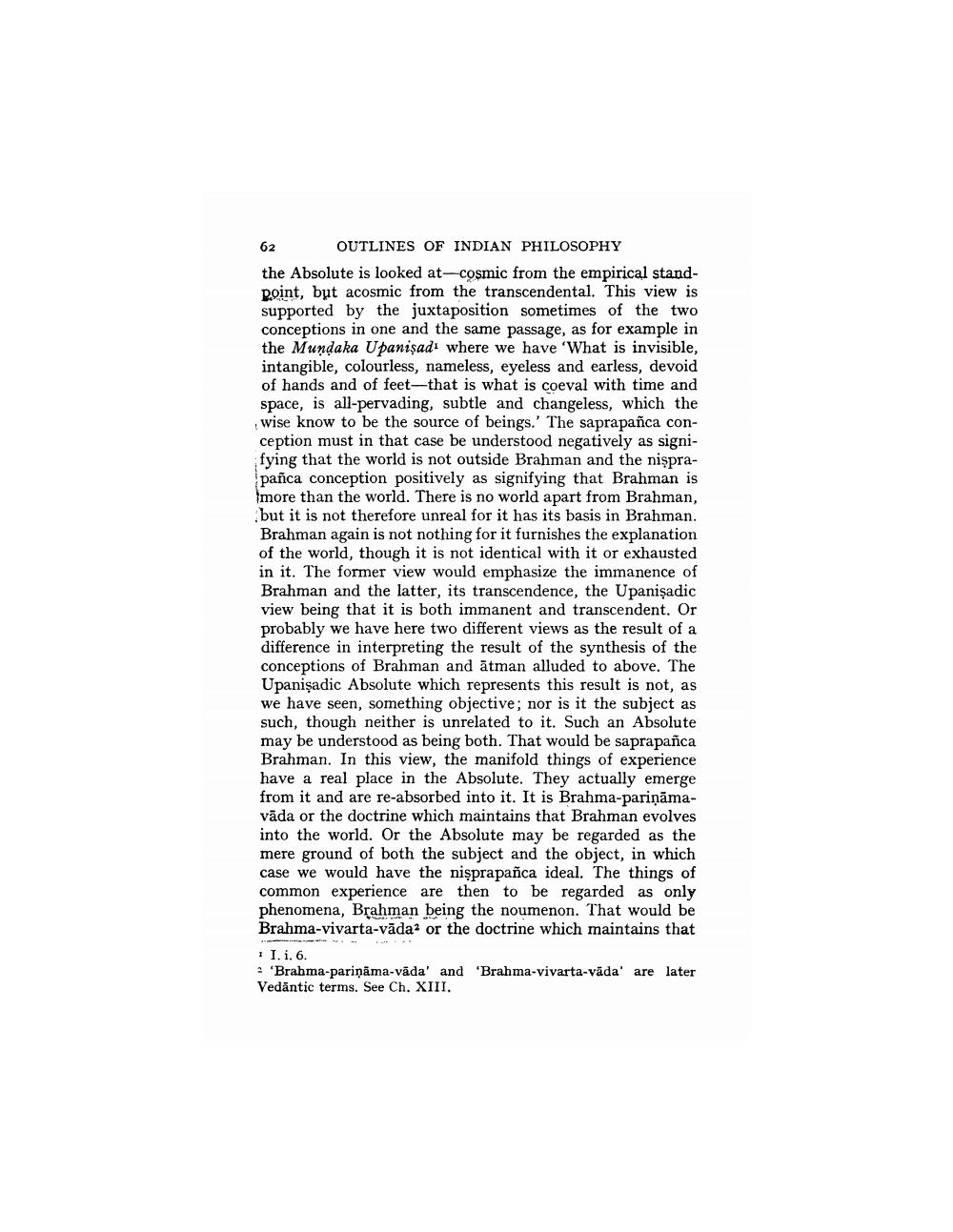________________
62 OUTLINES OF INDIAN PHILOSOPHY the Absolute is looked at-cosmic from the empirical standpoint, but acosmic from the transcendental. This view is supported by the juxtaposition sometimes of the two conceptions in one and the same passage, as for example in the Mundaka Upanişadı where we have 'What is invisible, intangible, colourless, nameless, eyeless and earless, devoid of hands and of feet-that is what is coeval with time and space, is all-pervading, subtle and changeless, which the wise know to be the source of beings.' The saprapanca conception must in that case be understood negatively as signifying that the world is not outside Brahman and the nisprapanca conception positively as signifying that Brahman is more than the world. There is no world apart from Brahman, but it is not therefore unreal for it has its basis in Brahman. Brahman again is not nothing for it furnishes the explanation of the world, though it is not identical with it or exhausted in it. The former view would emphasize the immanence of Brahman and the latter, its transcendence, the Upanişadic view being that it is both immanent and transcendent. Or probably we have here two different views as the result of a difference in interpreting the result of the synthesis of the conceptions of Brahman and ātman alluded to above. The Upanişadic Absolute which represents this result is not, as we have seen, something objective; nor is it the subject as such, though neither is unrelated to it. Such an Absolute may be understood as being both. That would be saprapanca Brahman. In this view, the manifold things of experience have a real place in the Absolute. They actually emerge from it and are re-absorbed into it. It is Brahma-pariņāmavāda or the doctrine which maintains that Brahman evolves into the world. Or the Absolute may be regarded as the mere ground of both the subject and the object, in which case we would have the nisprapanca ideal. The things of common experience are then to be regarded as only phenomena, Brahman being the noumenon. That would be Brahma-vivarta-vāda? or the doctrine which maintains that II. i. 6. : 'Brahma-pariņāma-vāda' and 'Brahma-vivarta-vada' are later Vedāntic terms. See Ch. XIII.




